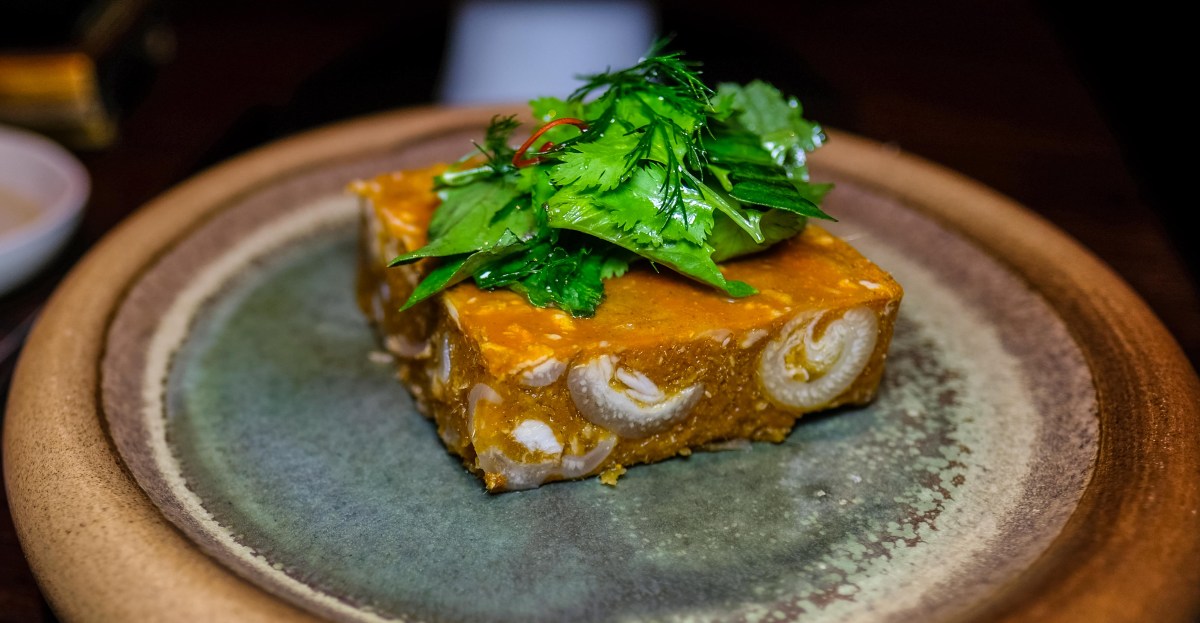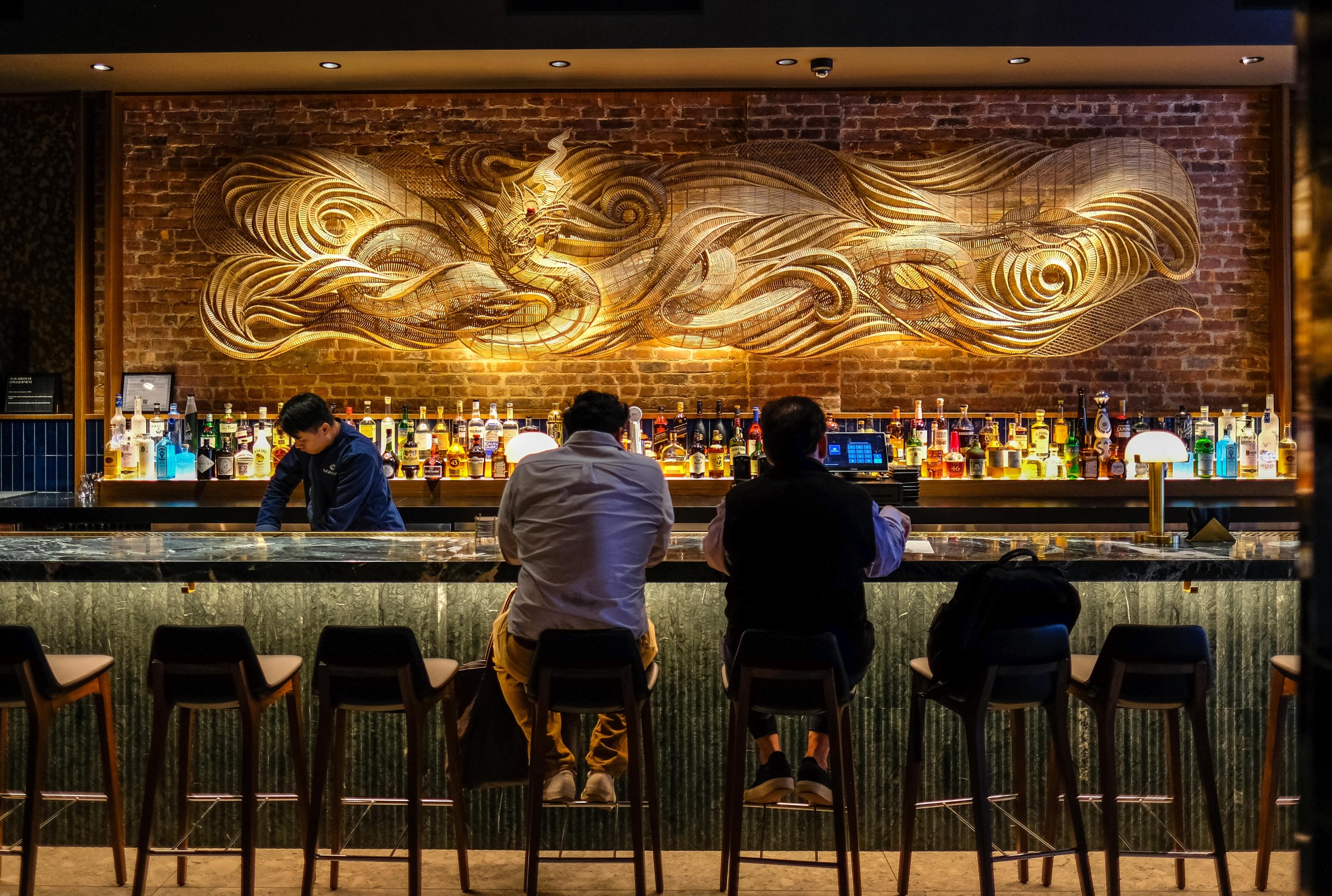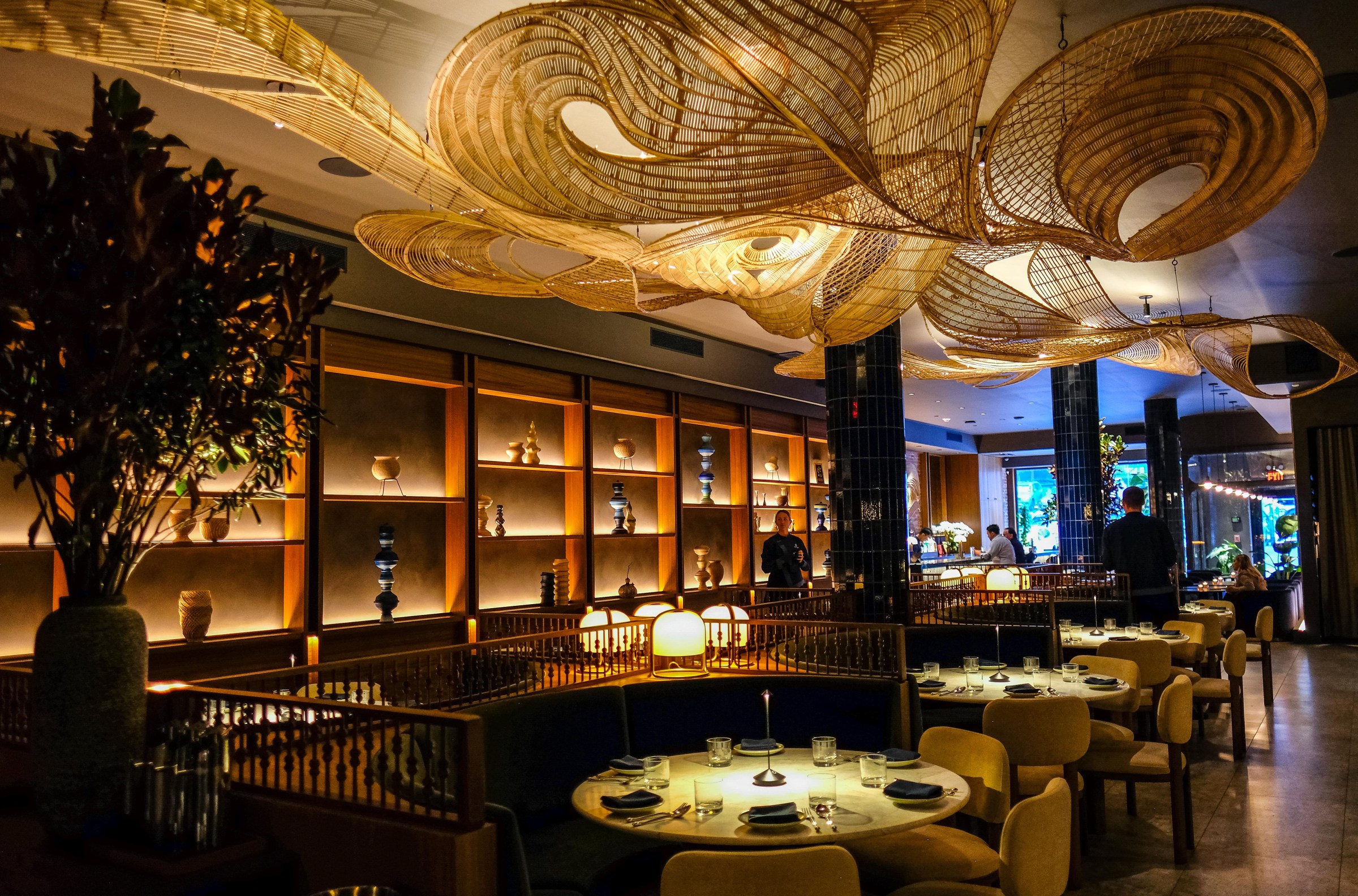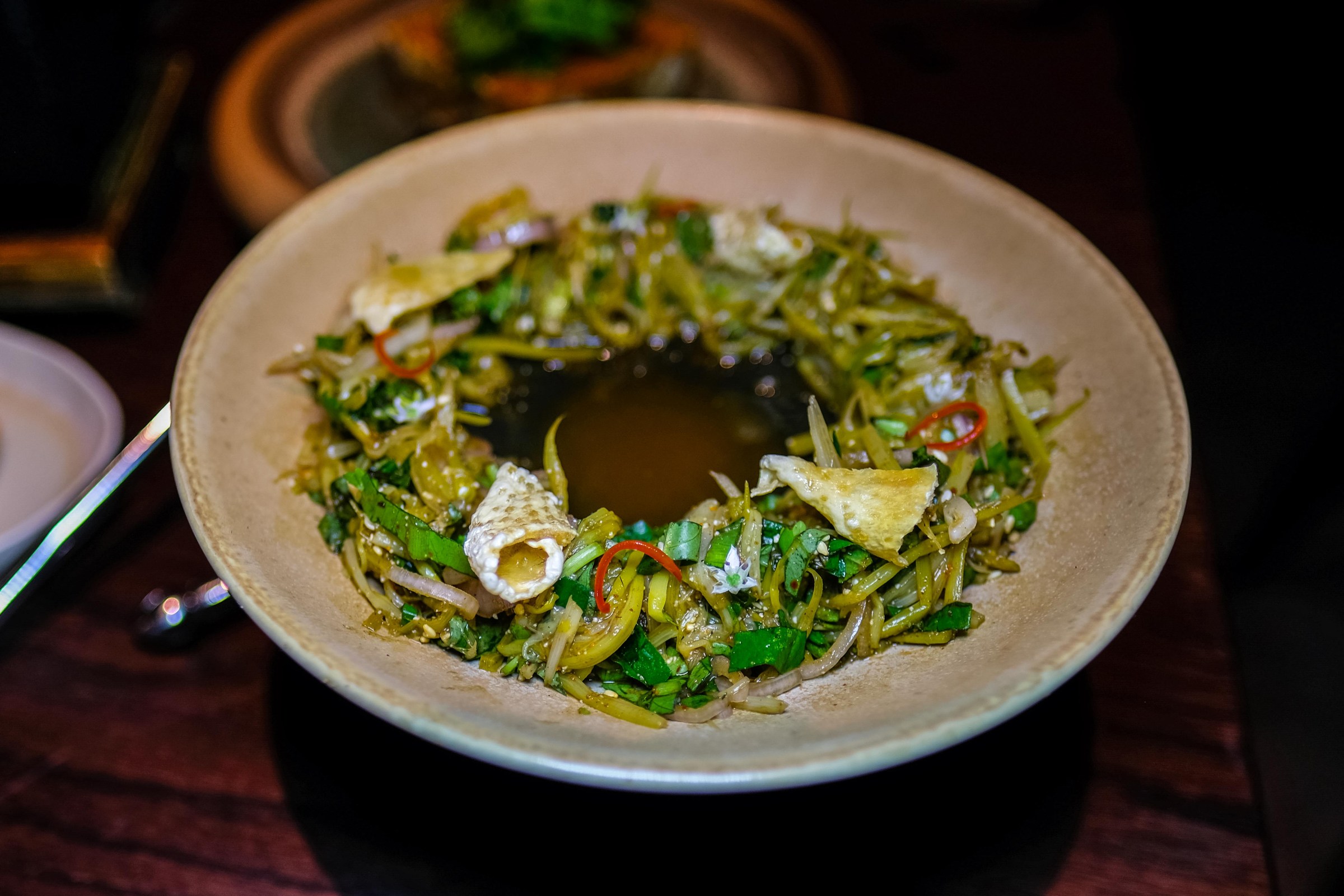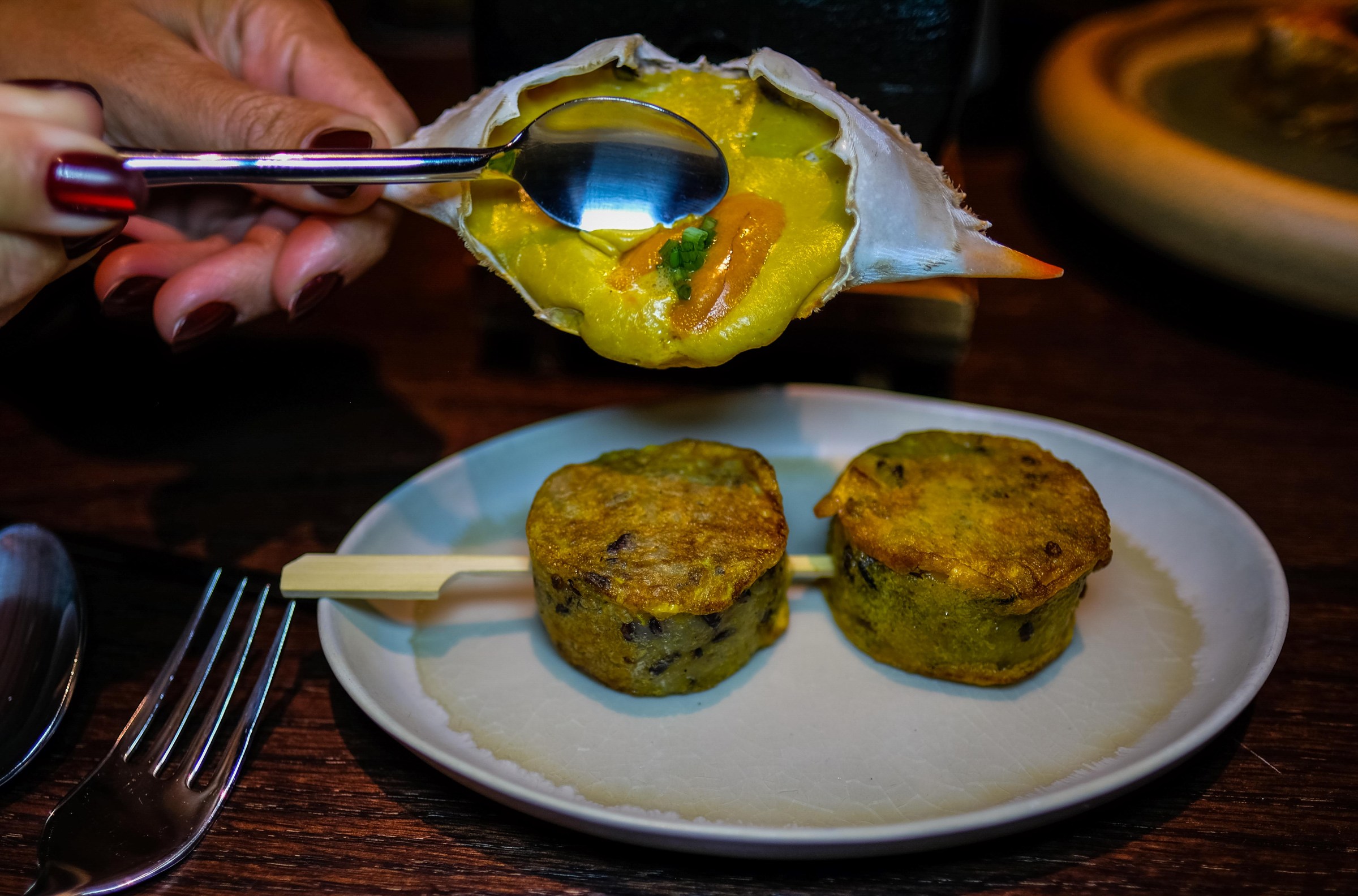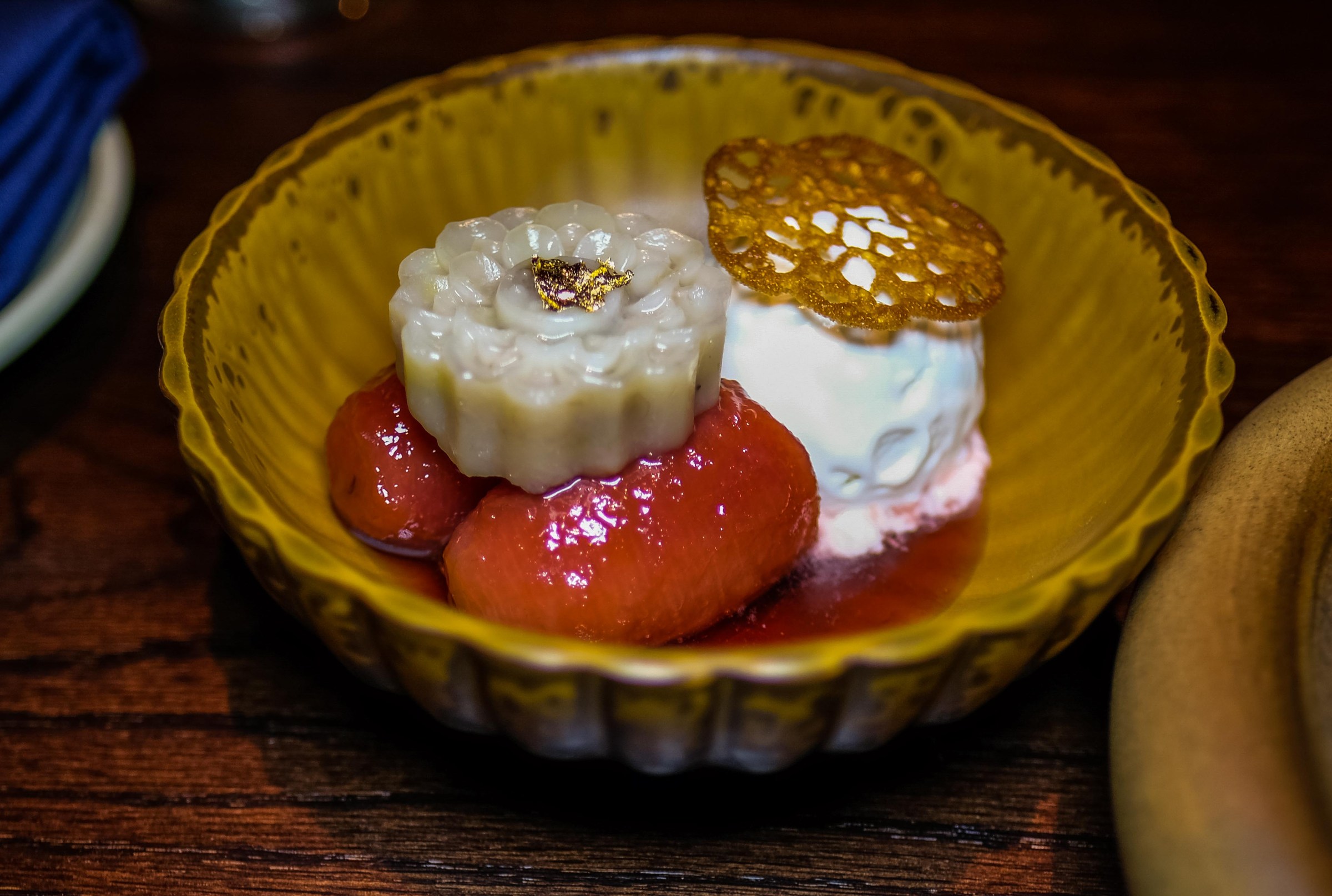When Rocky Romruen, Verasak Sangsiri, and Tanapon Srisupha signed the lease in 2022 for a big space that was to become Narkara off Union Square, they dreamed of doing more than opening just another Thai place. The trio which also run several other less ambitious restaurants under the Kinnaree Hospitality Group umbrella (Thep on the Upper East Side; V{IV} in Hell’s Kitchen), spent the last three years creating what they call a “cultural bridge” celebrating traditions, aesthetics, and the food of Thailand’s often overlooked northern and northeastern regions along the Mekong River.
“We wanted to do something different,” Sangsiri tells Eater. “We have been in New York for more than two decades, and we realized that our native home is really missing from the Thai restaurant scene here.”
One of Divine Nagas, a benevolent serpent god, watches over the bar up front at Narkara. Scott Lynch/Eater NY
Narkara’s boldly flavored and unfamiliar dishes would kill in a utilitarian setting along some semi-decrepit stretch of eastern Chinatown — think Mam or Ha’s — but will the city’s more adventurous eaters be lured inside such a generically opulent room, on such a normie block?
In the early going, the answer seems to be yes. Here is the scene at 6:30 p.m. on a Friday night, when nearly every table was taken.
The name Narkara, Sangsiri tells us, is a reference to the heavenly underwater realm in Thai mythology, and the theme plays out in subtle ways throughout the space. A “baby serpent god,” for example, one of the Divine Nāgas charged with guarding the gates of the realm, watches over the cushy bar and lounge in the front.
All of the art, including the ceramics along the wall, was created by North and Northeastern Thai artists. Scott Lynch/Eater NY
Most of Narkara’s 140 seats reside in the long main dining room, which is divided by a row of interlocking banquettes to give a bit of intimacy to the grand space. Stretching across the room’s ceiling is a restless river of swirling bamboo, and dramatically lit shelving runs the length of one wall, stocked with handcrafted ceramics.
The art and tableware were commissioned or sourced from Northern Thai artists, said Sangsiri. The effect skews slightly bland, like you’ve walked into some sort of wannabe-hip hotel chain, but the Narkara team literally spent years pulling it together. Plus, the Divine Nagas, though fierce, often serve as the benevolent protectors of those who enter their world. So maybe just relax and enjoy the vibes?
Founding partner Srisuphan is responsible for many of the old family recipes, and executive chef Sakdiphat Mokkasak brings them to life in the kitchen through slow-simmering, curing, and/or fermentation. Most of these were completely new to me. The chilled red curry terrine ($21) is wild, like biting into a dense, spicy, porky blondie. The menu calls it “uniquely textured” because that probably sounds less scary than saying that it’s “studded with chunks of cartilage,” but either way, this dish is delicious.
The asparagus and yanang aspic salad at Narkara. Scott Lynch/Eater NY
Also unusual and even spicier is the asparagus and yanang aspic salad ($22). The headlining ingredient is shredded; tossed with herbs, toasted rice powder, and fermented fish sauce; then encircled around a glassy disc of intense gelatin. Take a moment to enjoy how much it looks like some sort of jungle watering hole before mixing it all up.
Other standouts in the small plates section include the sausage platter ($34), starring sliced-up sai ua, which is mildly spicy and very herby; and three plump, juicy sai krok isan, which are tangy as hell. These are accompanied by a stack of raw vegetables, which contribute a little brightness and bitterness, as well as some crackling fried pork rinds and a bit of jaew pla ra, Thailand’s famous fermented fish chile dip.
The showstopper starter is Narkara’s crab butter custard with uni ($28), which seems to land on every table as much for its luxe-coded ingredients as its theatrical presentation. The custard and sea urchin arrive inside a repurposed crab shell atop a mini live-fire grill, and you dump its contents over a pair of sticky rice crab cakes on a separate plate. It’s definitely good and fun, though maybe not seven-bucks-a-bite fun.
The crab butter custard with uni at Narkara. Scott Lynch/Eater NY
Our biggest challenge on the night was choosing just two things from the array of large plates. The jackfruit and spare rib curry ($32) sounded great, as did the seared Iberico pork with galangal chile sauce ($36), the stir-fry duck breast ($42), and the roasted sea bass wrapped in a banana leaf ($48).
But we didn’t get any of those! Instead, following our server’s suggestion, we ordered the seemingly ho-hum poached chicken in herb broth ($28), which was phenomenal. The bird is ridiculously tender — apparently, a rare Northeastern steaming technique is deployed here, which utilizes condensation to baste the meat while it cooks — and a spoonful or two of the fiery broth will warm you right up. Just a deeply satisfying fall or winter dish.
Even more pleasantly surprising was the steamed savory egg custard entree ($24), which tasted like an intensely earthy flan. Betel leaves and mushrooms are doing a lot of work here, and it’s the prettiest plating of the night.
Both desserts rule. An alarmingly red poached banana that comes with a scoop of creamy coconut ice cream ($18). And palm sugar ice cream adorns a slab of taro custard ($20).
The poached banana with coconut ice cream at Narkara. Scott Lynch/Eater NY
Classic cocktails are given a Thai twist. There’s the Makwaen Penicillin ($22), with makwaen pepper-infused scotch, mezcal, dry vermouth, and galangal syrup; and a bloody mary-ish concoction featuring larb-spiced tequila ($20). I did enjoy my zero-proof longan pandan juice ($14), which had lots of berries bobbing around in the tall glass. A couple of beers, some expensive sake (Dewazakura Awa, $260), and a dozen or so bottles of wine for well under $100 round out the booze options.
When we were there, the room was just starting to get boisterous: Here’s hoping it stays that way. Kick-ass food from this kitchen deserves an audience.

